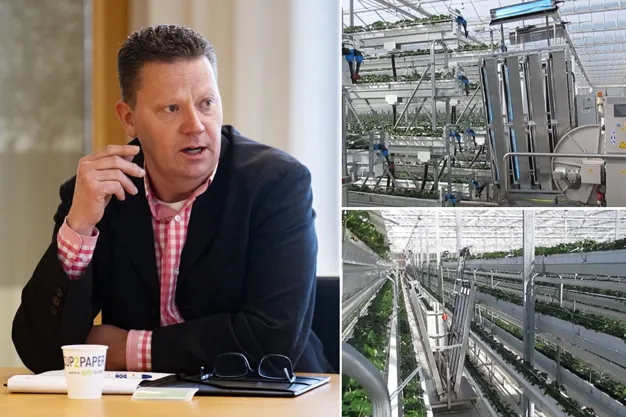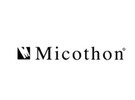UV-C technology is increasingly gaining traction in horticulture. As with all ‘new’ solutions, there’s a reason for this. “When the pressure is on, and/or there are no more options available, the market is ready for something new,” says Peter van Dongen of Micothon. Due to the shrinking arsenal of available treatments, they’re seeing a rise in demand for their UV-C solution, MicoLight, in combating powdery mildew.

How does it work?
UV-C radiation acts on the DNA of microorganisms. “It triggers the DNA to self-destruct,” explains Peter. “The simpler the microorganism, the more effective the treatment. Powdery mildew is relatively simple; Botrytis and Fusarium are more complex. Therefore, with powdery mildew, there is 100 percent effectiveness, while with other fungi, it’s partial. If applied correctly, you can be powdery mildew-free, as proven by trials and now in practice.”
Proper application is crucial
The key, therefore, is proper application. “At least five applications every two weeks, on average every two to three days.” The treatment is always used preventively, not curative. “It acts on the formation of the fungal hyphae. When the fungus attempts to form a hyphae, the DNA is triggered to self-destruct by the UV-C. Then no fungal hyphae is formed, and it doesn’t grow inward, and there’s no sporulation.”
Agents can also work curatively because they remain on a plant for a while, unlike light. “That’s why you need to repeat the treatment regularly. Trials in Hoogstraten have shown that illuminating at night is best to prevent the fungus from growing during the day. WUR has demonstrated that it also works at the end of the afternoon, but nighttime is best to avoid interfering with sunlight.”
Safety first, for personnel and crops
Although UV-C is not dangerous, it’s not entirely without risk: it can cause arc eye, Peter warns. It’s also important to handle it carefully with crops. “We advise a distance of 25-50 cm, with a travel speed of 20 to 30 meters per minute. If you drive really slowly and give too much light, a plant can burn, but we haven’t seen that in strawberries yet, so we can go quite far with UV-C light in strawberries.”
The Micothon factor
Micothon is not the only company offering UV-C robots – so what sets them apart? “First of all, we have a lot of experience with UV-C in roses and cucumbers for over 10 years. A second point is that we don’t turn off the lamp at the end of the row but cover it with a cap. That’s safer for the user – as soon as someone comes into the aisle, the lamp is shielded to prevent exposure to UV-C. And if you keep turning a fluorescent lamp on and off, it doesn’t last as long. Ours lasts much longer. And it delivers a constant output of UV-C.”
Furthermore, Peter continues, Micothon is the only one that can make a UV-C robot run without a tube rail system. “That’s special because you can’t really work with GPS in a greenhouse since the structure acts as a Faraday cage. Our robot works with laser technology, allowing it to stay on course.”
Increasing demand
As mentioned at the beginning, the demand for UV-C is rising. This is due to the increasing fungal pressure from the bad weather last year, Peter explains. “We saw it in all crops and thus also in strawberries with powdery mildew. There was a lot of spraying, and that can’t go on indefinitely: there are fewer agents available, and auctions and purchasing organizations also prefer no residues on the product. Thus, the demand for UV-C technology has rapidly increased.” This demand translates into the supply from Micothon: “We are now building three large machines and two small ones, the first MicoLight will be operational in mid-April in Belgium, with a wide cap without tube rail, at Lamberries in Merksplas.”
For more information: Micothon
Micothon
Peter van Dongen
Tel.: 06 5325 6044
[email protected]
http://www.micothon.nl/